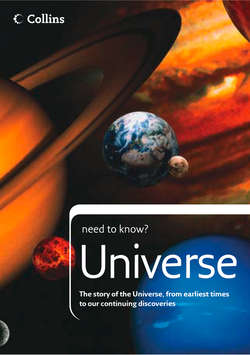Читать книгу Universe: The story of the Universe, from earliest times to our continuing discoveries - Peter Grego - Страница 67
Our lunar companion
ОглавлениеThe Moon is so big and bright that plenty of detail can be seen on its surface through even the most basic optical equipment – a fact that has delighted lunar observers from Galileo to the present day. It is not surprising that many early telescopic observers chose to study the Moon, to draw its features and to map its surface. The Moon’s landscape really did resemble parts of the Earth – Galileo had likened it to parts of Bohemia – so did it have an atmosphere and could it support life? Large dark patches visible with the unaided eye were discovered to be relatively flat grey plains. These areas became known as ‘maria’ (Latin: seas), but it was plain to see through the telescope eyepiece that they did not represent bodies of water.
The mid-17th century saw the publication of a number of detailed lunar maps. One by Johannes Hewelke (Hevelius) was published in his Selenographia, complete with names for lunar features based upon geographical landmarks, like Sicily, Mount Etna and the Mediterranean Sea. From his private observatory, Hevelius also made accurate measurements of star positions and produced the Uranographica, the most advanced star atlas of its time; the names for his seven new constellations are still used by astronomers today.
At around the same time, Giovanni Riccioli published an accurate lunar map which incorporated nomenclature that is still current, including his names for the Moon’s seas, such as Mare Tranquillitatis (the Sea of Tranquillity) and many of the larger craters like Copernicus (Mount Etna on Hevelius’ map) – familiar names to modern watchers of the Moon.
Giovanni Riccioli’s Moon map of 1651.
Christiaan Huygens’ explanation of Saturn’s rings and their changing appearance.
